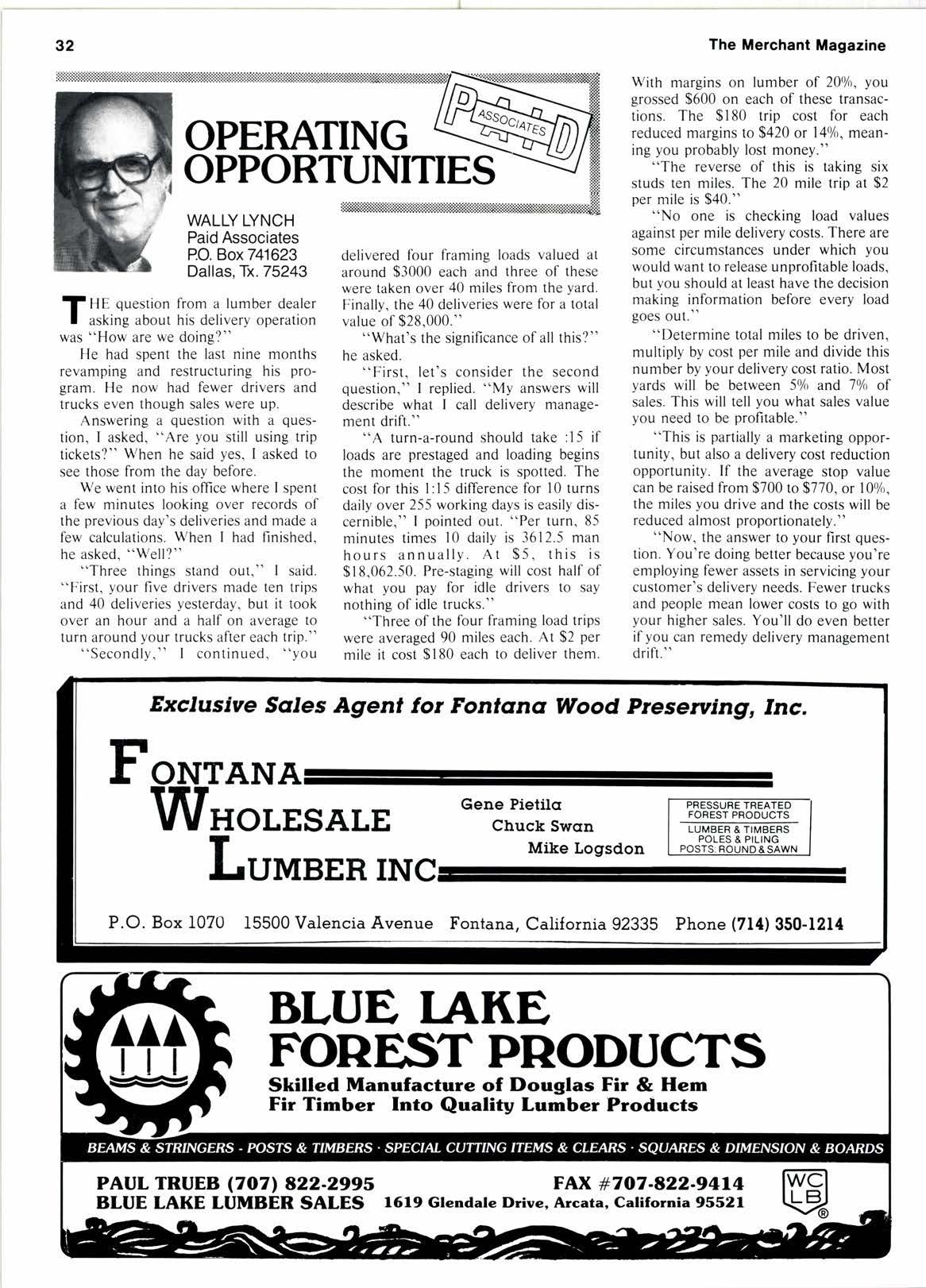
2 minute read
OPERTryIING OPPORTUNITIES
WALLY LYNCH Paid Associates PO. Box 741623 Dallas.Ix.75243
THf question from a lumber dealer I asking about his delivery operation was "How are we doing?"
He had spent the last nine months revamping and restructuring his program. He now had fewer drivers and trucks even though sales were up.
Answering a question with a question, I asked, "Are you still using trip tickets?" When he said yes, I asked to see those from the day before.
We went into his office where I spent a few minutes looking over records of the previous day's deliveries and made a few calculations. When I had finished, he asked. "Well?"
"Three things stand out," I said. "First, your five drivers made ten trips and 40 deliveries yesterday, but it took over an hour and a half on average to turn around your trucks after each trip."
delivered four framing loads valued at around $3000 each and three of these were taken over 40 miles from the yard. Finally, the 40 deliveries were for a total value of $28,000."
"What's the significance of all this?" he asked.
"First, let's consider the second question," I replied. "My answers will describe what I call delivery management drift."
"A turn-a-round should take :15 if loads are prestaged and loading begins the moment the truck is spotted. The cost lor this 1:15 difference for l0 turns daily over 255 working days is easily discernible," I pointed out. "Per turn, 85 minutes times l0 daily is 3612.5 man hours annually. At $5, this is $18,062.50. Pre-staging will cost half of what you pay for idle drivers to say nothing of idle trucks."
"Three of the four framing load trips were averaged 90 miles each. At $2 per mile it cost $180 each to deliver them.
With margins on lumber of 200/0, you grossed $600 on each of these transactions. The $180 trip cost for each reduced margins to $420 or l4%, meaning you probably lost money."
"The reverse of this is taking six studs ten miles. The 20 mile trip at $2 per mile is $40."
"No one is checking load values against per mile delivery costs. There are some circumstances under which you would want to release unprofitable loads, but you should at least have the decision making information before every load goes out."
"Determine total miles to be driven, multiply by cost per mile and divide this number by your delivery cost ratio. Most yards will be between 50/o and 70/o of sales. This will tell you what sales value you need to be profitable."
"This is partially a marketing opportunity, but also a delivery cost reduction opportunity. lf the average stop value can be raised from $700 to $770, or 100/0, the miles you drive and the costs will be reduced almost proportionately."
"Now, the answer to your first question. You're doing better because you're employing flewer assets in servicing your customer's delivery needs. Fewer trucks and people mean lower costs to go with your higher sales. You'll do even better if you can remedy delivery management drift."
SEUERETY degraded and sometimes totally missing middle lamella is identified by arrows in electron microscope view of the cell structure of MAP treated southern yellow pine plywood after exposure to 170"F and 90% R.H. for 28 days.
ARR0lltfs point out a sound intact middle lamella in this electron microscooic view of the cell structure of Dricon treated southern yellow pine plywood after exposure to 170'F and 90% R.H. for 28 days.










